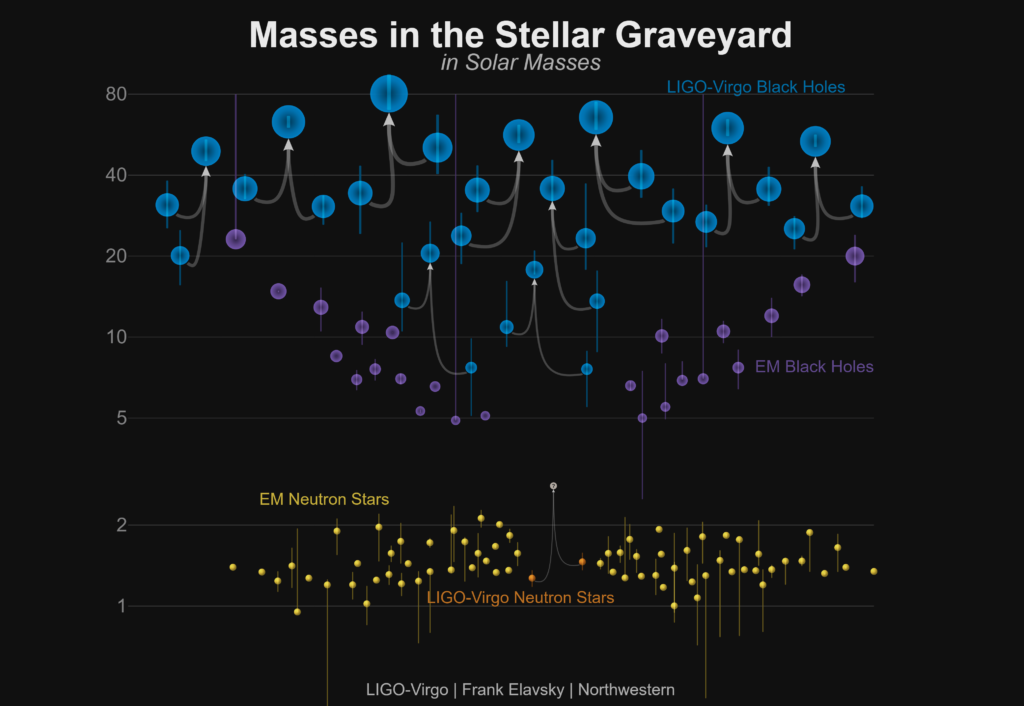 New detections and analysis of gravitational waves – announced Saturday, Dec. 1, at the Gravitational Wave Physics and Astronomy Workshop in College Park, Maryland – broaden scientists’ understanding of the entire population of stellar-mass black holes, which are formed from collapsing stars.
New detections and analysis of gravitational waves – announced Saturday, Dec. 1, at the Gravitational Wave Physics and Astronomy Workshop in College Park, Maryland – broaden scientists’ understanding of the entire population of stellar-mass black holes, which are formed from collapsing stars.
The National Science Foundation’s LIGO (Laser Interferometer Gravitational-Wave Observatory) and the European-based Virgo gravitational wave detectors have now detected gravitational waves from a total of 10 stellar-mass binary black hole mergers and one merger of neutron stars, which are the dense, spherical remains of stellar explosions.
Four additional detections provide LIGO Scientific and Virgo Collaboration (LVC) scientists a sufficient amount of data to infer properties that apply to all stellar black holes. Most notably, the Compact Binary Coalescence Rates and Populations subgroup, co-chaired by Northwestern University’s Chris Pankow, deduced that almost all stellar black holes weigh less than 45 times the mass of the sun.
Rates and Populations Science Summary PDFGravitational-Wave Transient Catalog Science SummarY PDF
Continue to the full Northwestern News story.
Continue to the LIGO press release.
Science Jedi Blog: “A Cosmic Collection” by Shane Larson
View the interactive visualization: Masses in the Stellar Graveyard
Roundup of Media Mentions of CIERA/Northwestern
- BBC News, “Gravitational waves: Monster black hole merger detected” by Jonathan Amos
- arsTECHNICA, “Physicists detected gravitational waves from four new black-hole mergers” by Jennifer Ouellette
- Science Daily, “LIGO and Virgo announce four new gravitational-wave detections” by Massachusetts Institute of Technology
- SYFYWire, “*Four* new black hole mergers have been found blasting out gravitational waves!” by Phil Plait
- ABC Science, “Biggest black hole collision yet detected by new gravitational wave discovery” by Belinda Smith
- Gizmodo, “Physicists Spot Four Black Hole Collisions, Including the Largest One Ever Recorded” by Ryan F. Mandelbaum
- Space.com, “4 Gravitational-Wave Detections Include Largest, Most Distant Black Hole Crash Ever” by Meghan Bartels
- Forbes, “Five Surprising Truths About Black Holes From LIGO” by Ethan Siegel
- Scientific American, “New Gravitational-Wave Detections Include Largest, Most Distant Black Hole Crash Ever” by Meghan Martels (Space.com)
- How Stuff Works, “Gravitational Waves Are Lifting the Veil of Cosmic Darkness” by Ian O’Neill

